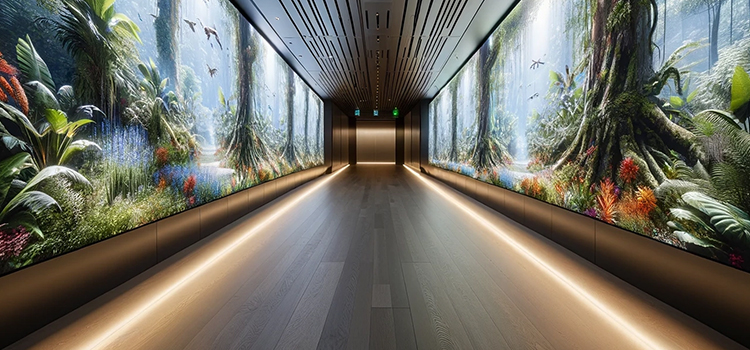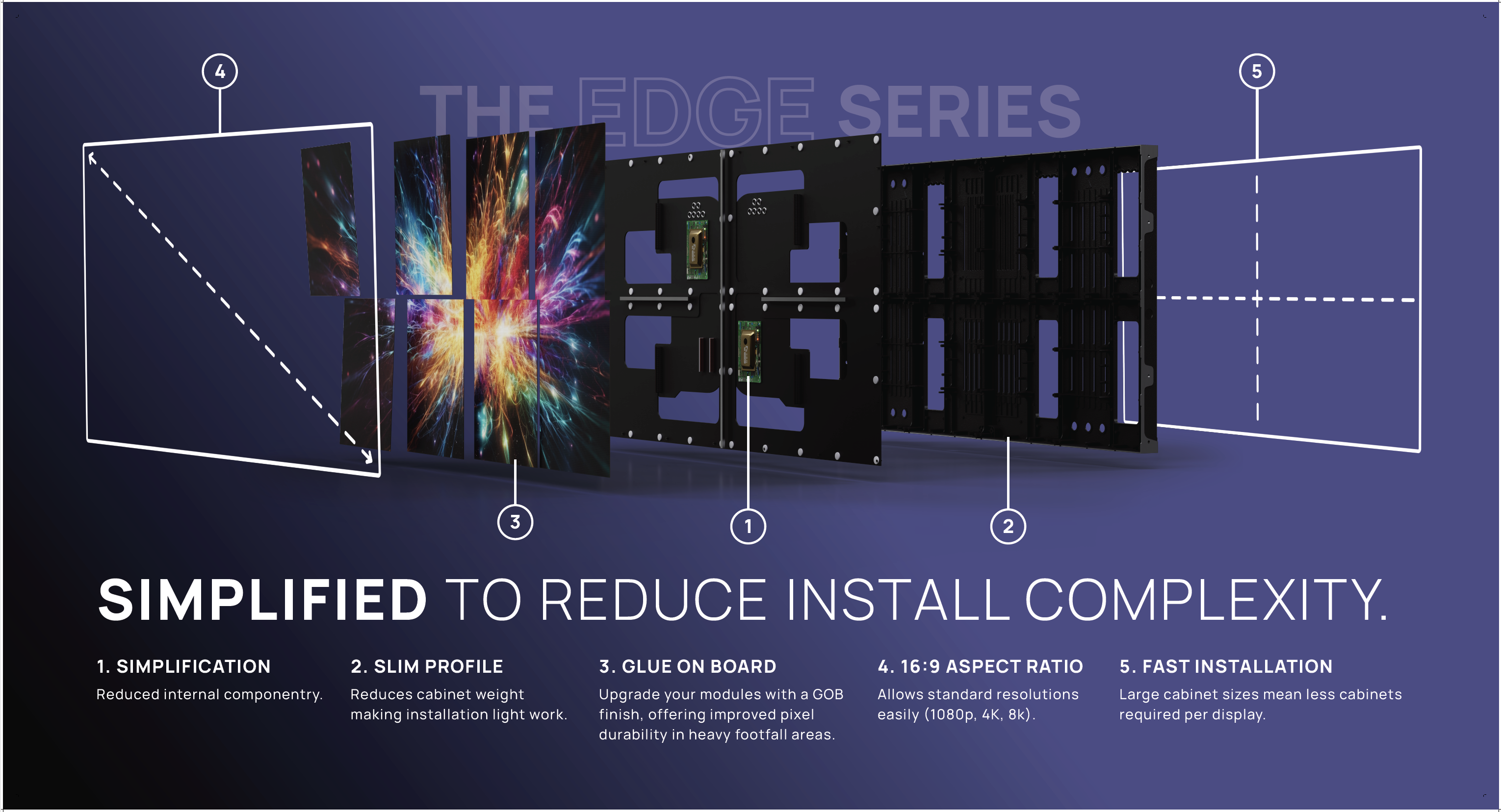Don't Pay for Pixels You Don't Need
Ready for a paradigm shift in how you think about LED displays and video walls? Read on.

Sponsored Content
Ready for a paradigm shift in how you think about LED displays and video walls? We sat down with Ross Noonan, Global Technical Sales and Marketing Manager at LED Studio, to discuss how the company is banking on not selling you what you don't need and how they are creating a truly more sustainable LED display product. And even if you don't make a purchase from LED Studio, Noonan hopes to educate LED display buyers on how to understand what they need versus what they think they want.
Simplifying a Complex Industry
Unless purchasing an all-in-one solution for a specific need, Noonan said, "There are so many variables involved when buying LED displays." Figuring out the size of the pixel pitch, the type of pixel technology, how bright it needs to be, and the refresh rate needed are all careful considerations that will determine the overall specification of the screen.
Noonan added, "One of the first steps we took was to make LED simpler for the end user and the installer because, if it's easier to install you're less likely to get issues, even before you get to turning the screen on for the first time. If your product is really complex, then a lot of the time, the screen gets installed badly in terms of cabinet alignment, which will affect image quality."

LED Studio's EDGE Series indoor LED is a perfect example of designing for simplicity. They fondly call it the "video wall killer." "We set out to create a product that was a direct replacement for flat panel video wall technology, which we see as the old legacy form of large format displays using screens," Noonan explained. To ensure ease of specifying, LED Studio started by creating the biggest fixed install cabinets in the world (43-inch, 55-inch and 65-inch) that can be specified the same way a popular video wall panels would be, and to ensure retrofitting is simple using standard VESA fixing points or directly to the wall. "We wanted to make the technology easy to specify into existing projects, and this has been achieved" Ross added.
Here's where this gets interesting. If a customer wants a 130-inch display using traditional video wall cabinets measuring 600x337mm, it will require 25 cabinets. LED Studio's EDGE Series can be used in 2x2, 3x3, and 4x4 arrays, and to build a 130-inch display, it would only require four 65-inch cabinets.
Check out the 43-inch EDGE Pro, and the 54-inch EDGE Pro.
A daily selection of features, industry news, and analysis for tech managers. Sign up below.
Upping the Ante and Setting the Record Straight
"We wanted to create a platform with the EDGE Series that you could interchange pixel technologies and customize it depending on where it's going to go," said Noonan. For example, in a shop window application, the EDGE Series uses the relatively new Flip Chip High Bright technology. "In the past, you've had to use quite a low-resolution outdoor or even rental LED even though it's going in a shop window because you need that extra brightness," Noonan explained. "We've broken the trend a bit and offer a Swiss army knife product where you can customize it however you want in terms of resolution, brightness or pixel technology (SMD, Flip Chip or COB). It gives you ultimate placement flexibility if you want to change it in the future."
"We say to our clients, 'Don't pay for pixels that you don't need or don't pay for resolution that you don't need.' You need to understand the target audience and where the minimum target audience viewing distance is going to be and work backward from there."
Ross Noonan
As pixel pitches are getting tighter, which translates into higher resolutions, the cost for some LED display technologies is also coming down. "As this is happening, we're finding that a lot of the time, people are not being properly informed," Noonan said. "We say to our clients, 'Don't pay for pixels that you don't need or don't pay for resolution that you don't need.' You need to understand the target audience and where the minimum target audience viewing distance is going to be and work backward from there."
The rule of thumb that many follow is that the minimum viewing distance (in meters) is approximately equal to the pixel pitch (in millimeters). So, for a 2mm pixel pitch screen, the minimum viewing distance would be around 2 meters. "People get fixated on this, and it often leads to the purchase of the wrong pixel pitch. Ask yourself this: how often is someone going to stand right in front of a large display that is more often or not 100" plus in size? Not very often. Perhaps we should start to think about it in terms of optimal viewing distance, which is based on screen size and target audience position. Getting these calculations right can save significant amounts of money and energy consumption amongst other hidden costs like content creation and playback," Noonan added.
When it comes to creating stunning immersive spaces, most people assume that the finer the pixel-pitch, the better the experience. "With costs coming down, we're starting to see LED being a viable alternative to projection in immersive applications because it has lots of benefits: you don't get shadows, and you can customize the pixel density based on budget and desired viewer experience," Noonan explained. "We're seeing a trend that leans towards really, really high resolutions when perhaps it is not always needed. Just look at projection, for example, that has dominated these use cases. If you go to many of these immersive galleries, the pixel density is quite low; in fact, when you get close to the walls, the pixels can be 3 or 4mm in size, and yet the spaces look truly incredible, and it doesn't impact the viewer experience as you're not meant to get that close to the walls. We're not saying there aren't applications that require super tight pixel pitches; of course, there are. We just want people to beware that it's not always needed."
Real Sustainability and Less Complexity
Nearly every manufacturer has a sustainability message. Many promote the use of recycled plastic and packing materials and lower power consumption. But LED Studio is going a step further. "Our mission is not only to make LED simpler but to use fewer components, less shipping costs, less packaging, and fewer individual bits and pieces that make up a screen," Noonan explained. "We're on a mission to eradicate throwaway culture with our V1 Architecture." The cabinet infrastructure allows for the pixel technologies to evolve as technology progresses, with options for Flip Chip High Bright (4000nits), Common Cathode, and the traditional SMD, allowing customers to tailor the display to their exact needs.
"If you want to upgrade or relocate the display, you may need to change the pixel pitch or brightness. With V1 Architecture, only 30 percent of the display undergoes replacement (the modules), preserving the remaining 70 percent in its original state. This approach reduces waste, ensuring maximum ROI," Noonan concluded.

LED Studio is a turnkey solution provider specializing in cutting-edge LED display technology. We excel in the design, manufacturing, installation, and maintenance of large-format displays. As specialists in cutting-edge technology, we transform your vision into stunning LED displays that captivate and engage.
The staff of AV Technology serves the community of decision-makers comprising AV/IT technology managers and directors, instructional technologists, and anyone making or influencing AV/IT technology decisions within their respective facilities and institutions.
